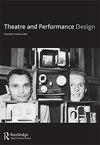"备注和查询" -那张鹪鹩画的
Q2 Arts and Humanities
引用次数: 0
摘要
在本文中,我将扩展“触觉洞察:模型制作作为历史方法”(Fergusson Baugh 2018)中提出的工作,并在最初为THEATRON项目准备的第二个Drury Lane剧院(1674)的案例研究重建中展示该方法的价值。我将通过与原始材料的程序性接触和虚拟模型的开发来探索这座建筑的历史。我还将探讨这一节中看似无关紧要的不一致如何解释Langhans、Mulling和Koenig的分歧(并解决他们中谁是正确的),以及计算机建模过程如何为一幅被强行撕扯但保留并精心保存了350年的画提供了一种更人性化的历史触觉洞察力。本文章由计算机程序翻译,如有差异,请以英文原文为准。
“Notes and Queries … ” – That Wren drawing
ABSTRACT In this article I will expand on work presented in ‘Haptic Insights: Model Making as Historical Methodology’ (Fergusson Baugh 2018) and demonstrate the value of the methodologies proposed there on a case study reconstruction of the second Drury Lane theatre (1674) initially prepared for the THEATRON project. I will explore the history of this building through a procedural engagement with source material and the development of a virtual model. I will also explore how an apparently inconsequential inconsistency in the section can account for Langhans, Mulling and Koenig’s disagreement (and resolve which of them was right), and how a process of computer modelling suggests a haptic insight into a more human history of a drawing that has been forcefully torn up but retained and carefully conserved for 350 years.
求助全文
通过发布文献求助,成功后即可免费获取论文全文。
去求助
来源期刊

Theatre and Performance Design
Arts and Humanities-Visual Arts and Performing Arts
CiteScore
0.40
自引率
0.00%
发文量
14
 求助内容:
求助内容: 应助结果提醒方式:
应助结果提醒方式:


